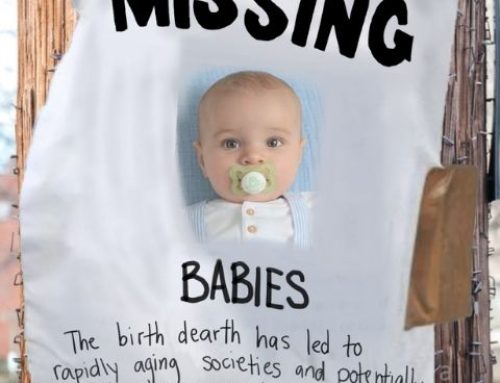 Jan. 22 marked the 40th anniversary of Roe v. Wade, a raw act of judicial imperialism that took the abortion issue out of the democratic realm and away from states, and ruled that abortion would be legal in all of the United States. The decision reverberates four decades later, affecting abortion policy, electoral politics, and the lives of millions of people touched by abortion.
Jan. 22 marked the 40th anniversary of Roe v. Wade, a raw act of judicial imperialism that took the abortion issue out of the democratic realm and away from states, and ruled that abortion would be legal in all of the United States. The decision reverberates four decades later, affecting abortion policy, electoral politics, and the lives of millions of people touched by abortion.
In the 1960s, many states began liberalizing their abortion laws, including New York and California. Texas was not one of them. In 1969, Norma McCorvey, who was in a relationship with an older, violent man, became pregnant with her third child. She was advised by friends to go to the hospital claiming she was raped and ask for an abortion. Because there was no police report, the doctors rebuffed her request. She tried to procure an illegal abortion, but could not locate an abortionist to do the job. She was referred to feminist lawyer Sarah Weddington, who filed suit against Dallas County district attorney Henry Wade in a U.S. District Court on McCorvey’s behalf, under the name Jane Roe. Before the case was heard, McCorvey gave birth. The case proceeded even though McCorvey no longer claimed to have been raped (and later admitted she lied about the pregnancy being the result of rape).
The district court ruled in McCorvey’s favour.
The case was appealed to the Supreme Court which agreed to hear the case in December 1971. Because of two retirements on the Court and the new justice had not heard the arguments – or because liberals on the court feared they might vote to uphold the law – the case was reheard in October 1972. At the same time, the Court considered Doe v. Bolton, a challenge by Sandra Cano’s (Mary Doe) lawyers against restrictions placed on abortion by the Georgia legislature.
On Jan. 22, the Supreme Court issued 7-2 decisions in both Roe and Doe, invoking the Supreme Court’s finding of broad privacy rights in the 1965 contraception case, Griswold v. Connecticut. Privacy, opponents of this raw judicial activism note, is not listed in the rights guaranteed by the constitution. Notably, Justice Blackmun, who once worked at the prestigious Mayo Clinic, spoke of abortion as a procedure doctors had the right to perform, not a women’s rights issue; as pro-Roe legal journalist Jeffrey Toobin noted recently in The New Yorker Blackmun’s decision used the word “physician” 48 times while the word “woman” appears only 44 times.
Most legal scholars, at least until recently, took issue with the reasoning outlined in the majority decision written by Justice Harry Blackmun. Judge Robert Bork, who would be later denied a seat on the Supreme Court because of his opposition to Roe, writes in The Tempting of America: The Political Seduction of the Law, that for two centuries before Jan. 22, 1973, “the moral question of what abortions should be lawful had been left entirely to state legislatures.” But Justice Blackmun needed 51 pages to explain why the issue was no longer “one for democratic decision but one of constitutional law” – an “implausible” proposition for which Bork says “not one sentence that qualifies as legal argument” is offered in support. No effort is made to “attach” the “right to abort” or “right to privacy” to any part of the constitution, for the obvious reason Bork said, because they cannot be found in the constitution.
In his dissenting opinion, Justice Byron White (joined by Justice William Rehnquist), said: “I find nothing in the language or history of the Constitution to support the Court’s judgment. The Court simply fashions and announces a new constitutional right for pregnant women and, with scarcely any reason or authority for its action, invests that right with sufficient substance to override most existing state abortion statutes.”
Just as the majority on the Court did not let the constitution and sound legal reasoning get in the way of allowing abortion, the Roe decision did not let science derail its judicial policy-making, either.
The Supreme Court of the United States took a gestational approach to ostensibly restricting abortion, limits that are widely ignored as every state permits abortion through all nine months. Saying that the question of when human life begins was unanswerable, the court decided that meaningful life could be defined (as after viability) and said it was within the prerogative of states to restrict abortion in the final three months of pregnancy.

Norma McCorvey, the Roe of the infamous decision, is a pro-life convert who says now she was used by pro-abortion supporters.
In a column published two decades after the decision was rendered, Washington Post columnist George Will said Roe rested “shakily on this doubly absurd proposition: no one knows when human life begins but the Court knows when ‘meaningful’ life begins.” Blackmun took the absurd position that the question of when life begins is solely a religious issue, before introducing the deeply philosophical concept of when human life becomes meaningful. His decision, predicated on the notion that the unborn child is potential life, ignored the medical advances and scientific knowledge of fetology. As the novelist and medical doctor Walker Percy said in the New York Times a decade after Roe “I do submit that religion, philosophy, and private opinion have nothing to do with the issue.” He said science is not agnostic on the issue of when life begins, indeed “it is a commonplace of modern biology, known to every high school student and no doubt to you the reader as well, that the life of every individual organism, human or not, begins when the chromosomes of the sperm fuse with the chromosomes of the ovum to form a new DNA complex that thenceforth directs the ontogenesis of the organism.” Furthermore, Percy added, there is a “clear continuum that exists in the life of every individual from the moment of fertilization of a single cell.”
Rather than acknowledge the scientific and logical continuum of human life from fertilization, the Court deigned to establish a status of life at an arbitrary point. (The columnist George Will once wondered what the justices would have done if pregnancy was not easily divisible by three and lasted, say, 11 months instead.) Babies in the third trimester are viable and therefore meaningful life begins, Justice Blackmun asserted. States could restrict late-term abortions as long as there were exceptions for when the mother’s life or health was at risk and the Court took a broad view of what that meant to include psychological health.
Although Justice Blackmun enunciated the meaningful life distinction in his majority decision in Roe, scholar Hadley Arkes pointed out that “in no subsequent case would Blackmun vote to uphold any effort on the part of a state to protect ‘potential life’,” including a Pennslyvania case (in 1979) that threw out that state’s law requiring late-term abortions be done in the way most compatible with ensuring the child would survive. That law was created in 1974 in response to Roe. George Will put it succinctly: “Abortion is the right to a dead fetus.” Thus when babies who survive abortions are often suffocated or murdered through “aggressive neglect.”
Pre Roe, 16 states, representing 41 per cent of the American population had liberalized their abortion laws, including California under then governor Ronald Reagan. The decision truncated the democratic process and imposed abortion on the country by fiat, but it also radically changed American politics by igniting a pro-life movement and (eventually) creating a Religious Right.
The year after Roe, lawyer Nellie Gray started the March for Life in Washington. A few thousand showed up and most of the participants were Roman Catholic, predominantly Knights of Columbus who voted Democratic. Now the march is ecumenical, evenly split between Catholic and evangelical, made up of predominantly youth and Republicans.
Jon A. Shields writes in the January First Things that the pro-abortion movement “almost collapsed” after Roe because it won and the matter was “decided” while the pro-life movement was birthed and grew dynamic, animated and energized by the religious zeal of Christian believers. WhileRoe bred apathy among the first wave of abortion activists, it led to a movement is not fighting for its life but literally the lives of millions of others. Shields says that Roe “removed abortion from the political process and deprived pro-lifers of normal avenues of political influence.”
In the intervening 40 years, pro-lifers have tried numerous strategies, in the political, spiritual, cultural, and service fields. George Grant in Grand Illusions: The Legacy of Planned Parenthood described the burgeoning response: “The Church arose from its cultural slumber … pro-lifers developed creative alternatives for women and children in crisis … serious legal challenges continued.” From street activism to political engagement, the movement sought to protect the unborn by blocking abortion facilities, educating the public, demonstrating for political action, and getting involved in party nominations (in the political primaries). The rise of the Religious Right and its influence in the Republican Party has practically guaranteed that the presidential nominee of that party is committed to overturning Roe v. Wade in the appointment of Supreme Court justices. Indeed, Roe’s greatest political influence is on the judiciary.
If the 1973 decision took abortion out of the political realm, it placed the nomination of judges squarely within it. The Hoover Institution’s Clint Bolick argued in his 2012 book Two-fer: Electing a President and a Surpreme Court that the power to nominate judges to the Supreme and federal courts is the “grand prize in presidential elections.” Both pro-life and pro-abortion activists often frame the case for their favoured candidate – or control of the Senate – in terms of determining the make-up of the Supreme or blocking their opponents from doing so.
In the last two decades, some states have restricted the abortion license with incremental limits on abortion: parental notification, funding limits, right-to-know laws. This seems to strike the balance that Americans want, which was rhetorically summarized by then candidate for president Bill Clinton: that abortion be safe, legal, and rare. While polls show more Americans call themselves “pro-life” than “pro-choice” and that most Americans do not want overly permissive abortion laws, the majority want Roe maintained. According to a Pew Research Centre poll released to mark the 40th anniversary, 63 per cent of respondents do not want to see the Court “completely overturn” the decision; 29 per cent would like to see the ruling overturned. These numbers are practically unchanged from 1992 and 2003 when 60 and 62 per cent respectively wanted Roeupheld. Pro-lifers obviously have work to do.
While the general public seems to support Roe, the woman at the centre of the controversy four decades ago does not. In the 1990s, Norma McCorvey, the Jane Roe of the landmark case, announced she became pro-life (as did Sandra Cano, the Mary Doe of Doe v. Bolton). McCorvey feels that when she was 22 years old she was used by the pro-abortion lawyer Sarah Weddington. McCorvey now admits that the pregnancy was not the result of a rape as she then claimed, although she had previously been raped and was in a violent relationship at the time. She describes in her autobiography that she became an alcoholic and moved from job to job before eventually working at a Dallas abortion mill. She says she changed her mind during Operation Rescue protests. She converted to Christianity and became pro-life, realizing the mistake she made.
Kate Michelman, then head of the National Abortion Rights Action League dismissed McCorvey s change of heart saying Roe is not about a single individual. Ramesh Ponnuru in his 2006 book The Party of Death, said that Michelman was right: “That is surely correct: it is about at least 45 million individuals – former individuals. That’s why McCorvey defected.”
Indeed, looking at the legacy of Roe, everything, from the assault on democracy, the rise of judicial activism, the rise of new political movements, and the sociological and health consequences, all pale in comparison to the toll in human lives. In the early 1990s, 1.6 million children a year died in surgical abortions. That number has decreased to just over a million abortions a year (due in part to pro-life activism but also the decline in the number of women in their child-bearing years and the rise of abortifacient drugs). A conservative estimate has the total casualties of Roe at 50 million. Time magazine’s coverage of the Roe anniversary said pro-lifers are winning, and indeed there are state-level battles being won. But in the larger war, the Culture of Death has the upper hand over the Culture of life: 50 million is an unimaginable holocaust unleashed upon the United States by the Supreme Court 40 years ago.





